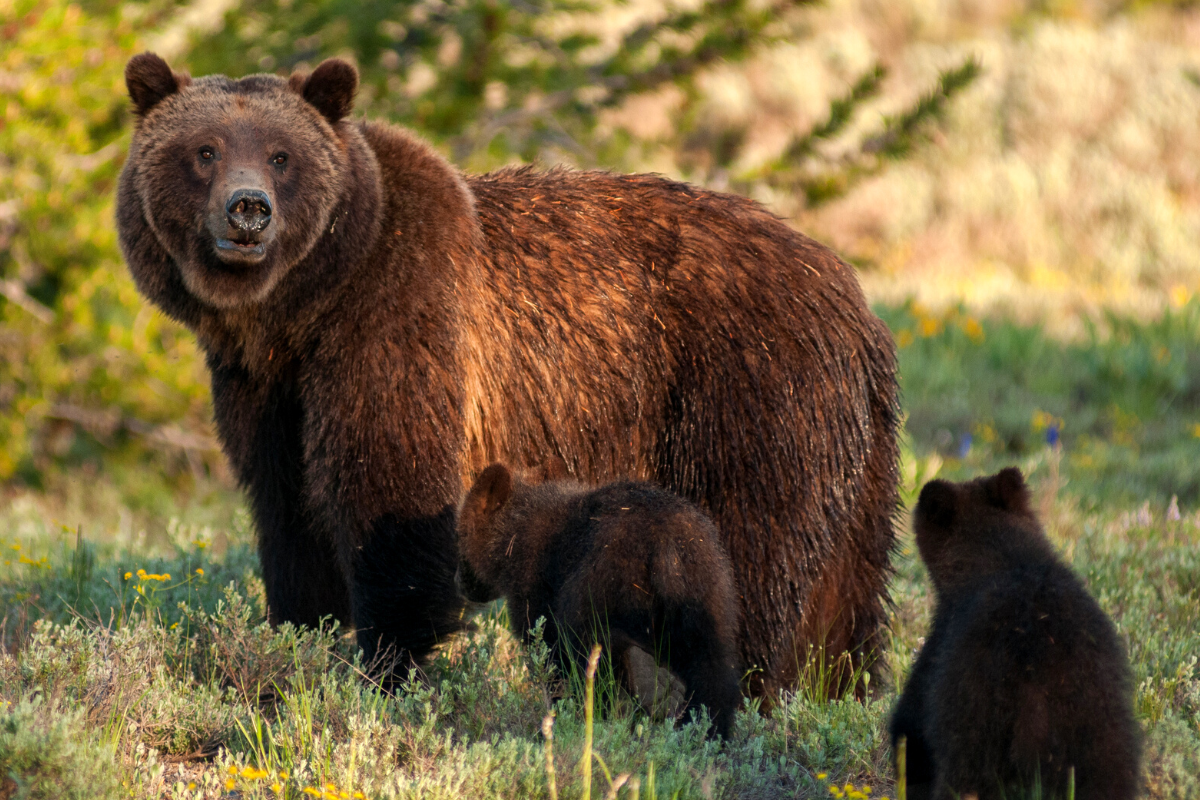Grizzly bears roamed the North Cascades in Washington State for thousands of years. As a keystone species, they spread seeds, aerated the soil, recycled nutrients and kept other wildlife populations in balance.
However, they were wiped out by hunters in the 19th and 20th centuries. Because of the declining populations throughout their former territory, in 1975 grizzly bears were listed as a threatened species under the Endangered Species Act (for the lower 48 states) and as an endangered species by the State of Washington in 1980.
There’s been no confirmed sightings in the U.S. portion of the rugged North Cascades—a section of the Cascade Range that extends from Northern California, through Oregon and Washington, into southern British Columbia—since 1996. Much of the bear’s habitat has been destroyed by logging and the expansion of agriculture and cities in the West.
The good news is the National Park Service and the U.S. Fish and Wildlife Service are considering bring them back to the area and is inviting the public to comment on options put forth in their North Cascades Ecosystem Grizzly Bear Restoration Plan by Dec. 14, 2022. Under the proposal, the agencies would capture bears from either British Columbia or the Northern Continental Divide of the U.S. About three to seven would be released in the North Cascades each year, over the course of about five to 10 years. The agencies would aim to establish an initial population of 25 bears. You can submit comments and find out more info here.
Friends of Animals supports the long-needed efforts to reestablish grizzly bear populations in the U.S. Northwest. Read our official comments here. We are asking supporters to urge the Government to:
- Reestablish thriving grizzly bear populations in the North Cascades Ecosystem.
- Explore the benefits to the ecosystem and other wildlife populations from bringing back a keystone species.
- Promote the health of the North Cascades Ecosystem over the interests of ranchers and private landowners.
- Keep bears safe by including a bear-hunting ban in surrounding areas and educating the public on measures to minimize interactions, such as sanitation control.
“Threatened grizzlies roaming the wildest parts of the North Cascades would create a thriving, balanced ecosystem,” said Priscilla Feral, president of Friends of Animals. “The plan is critical at a time when the governors of Montana, Wyoming and Idaho are hell bent on getting grizzly bears removed from federal protection under the Endangered Species Act in their states, in part so that bears can again be sport hunted.”
Stretching across 9,800 square miles of north-central Washington, the U.S. portion of the North Cascades ecosystem includes the North Cascades National Park, national forests and wilderness areas. With few roads and diverse landscapes, from fir forests to mountain slopes covered with huckleberry vines to alpine meadows, it offers one of the best grizzly habitats in the contiguous United States, according to the National Park Service.
The North Cascades is one of six ecosystems designated for grizzly recovery in the Lower 48, and zones in Montana, Wyoming and Idaho already have grizzly populations. The Yellowstone ecosystem, which occupies northwest Wyoming and parts of Idaho and Montana, now supports a population of more than 700 grizzly bears.
Grizzly bears once ranged from coastal Alaska to as far east as the Hudson Bay, and south across the Great Plains down to Mexico. The species is now found in Alaska, western Canada, and portions of the U.S. northwest, or about half their former range.
The restoration planning process for the North Cascades was underway in 2020 when the Trump administration’s Interior Department terminated it, reports The Washington Post.
“This is a first step toward bringing balance back to the ecosystem and restoring a piece of the Pacific Northwest’s natural and cultural heritage,” said Superintendent Don Striker of North Cascades National Park. “With the public’s help we will evaluate a list of options to determine the best path forward.”

